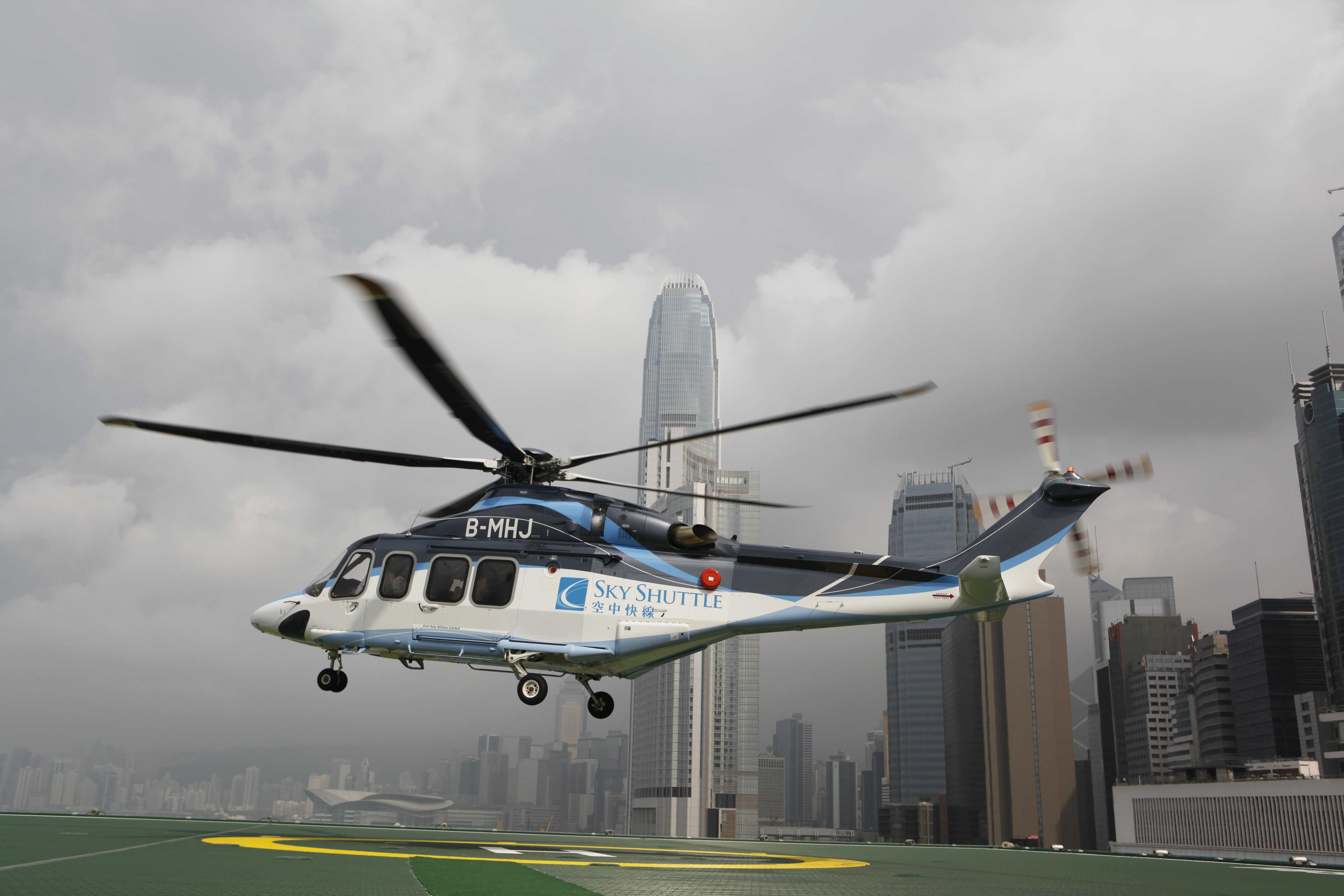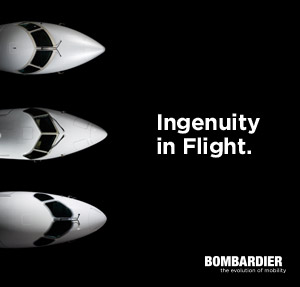Raytheon Awarded $27 Million Option for Patriot Engineering Services
April 20, 2009
TEWKSBURY, Mass., April 20, 2009 /PRNewswire/ — Raytheon Company (NYSE: RTN) has been awarded $27 million for engineering services for the Patriot Air and Missile Defense System.
The U.S. Army Aviation and Missile Command, Redstone Arsenal, Ala., provided the additional funding under a previously awarded contract to Raytheon in January 2009. This $27 million combines with $132.2 million awarded earlier this year bringing the value of the contract to $159.2 million with the potential for additional funding.
“We continually engage in software development, testing, and modernization to ensure that warfighters have the advantage in a world where the threat is changing,” said Sanjay Kapoor, vice president for Patriot Programs at Raytheon Integrated Defense Systems (IDS). “These investments in engineering services ensure that Patriot will continue to be the most modern, combat-proven and globally-fielded air and missile defense system.”
This contract provides for engineering services that support Patriot systems in the hands of the U.S. Army and Raytheon’s 11 international partners.
Work under this contract will be performed by Raytheon IDS at the Integrated Air Defense Center, Andover, Mass.; at IDS Headquarters, Tewksbury, Mass.; at the Warfighter Protection Center, Huntsville, Ala.; and at the Mission Capability Verification Center, White Sands, N.M.
Raytheon IDS is the prime contractor for both domestic and international Patriot Air and Missile Defense Systems and systems integrator for Patriot Advanced Capability-3 missiles.
Integrated Defense Systems is Raytheon’s leader in Global Capabilities Integration providing affordable, integrated solutions to a broad international and domestic customer base, including the U.S. Missile Defense Agency, the U.S. Armed Forces and the Department of Homeland Security.
Raytheon Company, with 2008 sales of $23.2 billion, is a technology and innovation leader specializing in defense, homeland security and other government markets throughout the world. With a history of innovation spanning 87 years, Raytheon provides state-of-the-art electronics, mission systems integration and other capabilities in the areas of sensing; effects; and command, control, communications and intelligence systems, as well as a broad range of mission support services. With headquarters in Waltham, Mass., Raytheon employs 73,000 people worldwide.
Pratt & Whitney Rocketdyne Prepares Hardware for NASA’s First Ares I-X Test Flight
April 20, 2009
CANOGA PARK, Calif., April 20 /PRNewswire/ — In preparation for NASA’s first Ares I-X test flight in August, engineers from Pratt & Whitney Rocketdyne have finished pressurizing and loading 1,423 pounds of propellants into heritage hardware from the Peacekeeper missile system that will be used to help return humans to the moon by 2020. Pratt & Whitney Rocketdyne is a United Technologies Corp. (NYSE: UTX) company.
“Pratt & Whitney Rocketdyne is working with NASA to use existing military hardware for a new, non-defense application,” said Cy Bruno, Roll Control System program manager, Pratt & Whitney Rocketdyne. “The Peacekeeper helped end the Cold War and now it is being used for our first step back to the moon.”
Under an agreement with Teledyne Brown Engineering, Inc., Pratt & Whitney Rocketdyne will use hardware from the Peacekeeper missile program to provide rocket stability during NASA’s first Ares I-X test flight. The Roll Control System (RoCS) will keep the Ares I-X from rolling in a corkscrew motion during flight. The heritage hardware includes thrusters, propellant tanks and a pressurization system, which Pratt & Whitney Rocketdyne built for the U.S. Air Force’s Peacekeeper missile system fourth stage during the Cold War. The Peacekeeper missile was decommissioned as part of the second Strategic Arms Reduction Treaty but was resurrected for the Ares I-X test flight system because it is reliable, available and able to handle the pulsing cycle needed for the test.
Pratt & Whitney Rocketdyne helped Teledyne Brown Engineering design the RoCS, which has two thrusters that will fire alongside the test rocket in short pulses to control the vehicle’s roll. After clearing the launch tower in a test scheduled at Kennedy Space Center in July, the Ares I-X rocket will be rolled 90 degrees to mimic the orientation that the Ares I rocket will use.
Pratt & Whitney Rocketdyne, Inc., a part of Pratt & Whitney, is a preferred provider of high-value propulsion, power, energy and innovative system solutions used in a wide variety of government and commercial applications, including the main engines for the space shuttle, Atlas and Delta launch vehicles, missile defense systems and advanced hypersonic engines.
Pratt & Whitney is a world leader in the design, manufacture and service of aircraft engines, space propulsion systems and industrial gas turbines. United Technologies, based in Hartford, Conn., is a diversified company providing high technology products and services to the global aerospace and commercial building industries.
Sikorsky Global Helicopters Delivers S-300C(TM) Helicopter to LD Aviation
April 20, 2009
HORSEHEADS, N.Y., April 20 /PRNewswire-FirstCall/ — Sikorsky Global Helicopters, a Sikorsky company, recently delivered an S-300C(TM) helicopter to LD Aviation Prague s.r.o. in the Czech Republic. Sikorsky Aircraft Corp. is a subsidiary of United Technologies Corp. (NYSE: UTX).
LD Aviation Prague is a sales distributor for Sikorsky Global Helicopters Light Helicopter Division products in the Czech and Slovak Republics and Hungary. The new helicopter will join two other S-300C helicopters at EHC Service s.r.o. in Presov, Slovak Republic. It will be used for training and pipeline and powerline monitoring. EHC Service also rents helicopters and pilots to the Slovak Ministry of Interior to support border monitoring.
LD Aviation Prague has provided commercial and military aviation services since 1994. Slovakia, a country of 5.4 million, has 25 registered civil helicopters.
“The S-300C helicopter is a recognized leader among single engine helicopters in Slovakia,” said Zdenek Fiser of LD Aviation Prague.
The S-300C helicopter’s versatility in a broad range of operations, from law enforcement and utility patrol to lift operations, makes it a good fit for the EHC fleet. With its 950-pound useful load, the S-300C helicopter combines precise maneuverability with outstanding endurance, all at an economical price.
In addition, the S-300C(TM) helicopter operates throughout the world in many demanding roles including military patrol, power line/pipeline patrol, commercial and military flight training, ranching, external load operations, animal surveys, aerial photography and personal transportation. The cockpit size, load capacity, performance characteristics, robust design and low direct operating costs make the S-300C(TM) a leader in its class.
Sikorsky Global Helicopters, a Sikorsky company, comprises current Sikorsky platforms S-76(R), S-92(R) and H-92(TM) helicopters; light helicopter platforms, the S-300c(TM), S-300 CBi(TM), S-333(TM) and S-434(TM) helicopters; and all operations of Keystone Helicopter Corp. and Associated Aircraft Group (AAG).
Sikorsky Aircraft Corp., based in Stratford, Conn., is a world leader in helicopter design, manufacture, and service. United Technologies Corp., based in Hartford, Conn., provides a broad range of high-technology products and support services to the aerospace and building systems industries.
BVR Systems (1998) Ltd. Reports Fourth Quarter and Year End Results for 2008
April 20, 2009
Net Profit for Fiscal Year 2008 was $1.6 Million and Revenues Grew 141% to $31.6 Million
ROSH HA’AYIN, Israel, April 20 /PRNewswire-FirstCall/ — BVR Systems (1998) Ltd. (OTCBB: BVRSF), a diversified world leader in advanced military training and simulation systems, today announced a net profit of $0.5 million or $0.00 per share for the fourth quarter of 2008, compared with a net loss of $2 million, or $0.02 per share for the fourth quarter of 2007.
Net profit for fiscal year 2008 was $1.6 million or $0.01 per share, compared with a net loss of $4million, or $0.03 per share for fiscal year 2007.
Revenues for the fourth quarter of 2008 were $8.3million, compared with revenues of $3.4 million for the fourth quarter of 2007. In fiscal year 2008, BVR’s revenues were $31.6 million, compared with total revenues of $13.1 million in fiscal year 2007, an increase of 141%.
Gross profit for the fourth quarter of 2008 was $2.0 million, compared with a gross loss of $0.6 million for the fourth quarter of the previous year. The gross loss for the fourth quarter of 2007 includes an inventory write-off of $0.7 million. For Fiscal year 2008, gross profit was $8.3 million compared with gross profit of $1.7 million for fiscal year 2007.
Operating profit for the fourth quarter of 2008 was $0.8 million, compared with an operating loss of $2 million for the same period last year. Operating profit for fiscal year 2008 was $2.2 million compared with an operating loss of $4 million for fiscal year 2007.
BVR’s order backlog at the end of fiscal year 2008 was approximately $52.8 million.
The company concluded 2008 with new booked orders in the total value of approximately US $33.3 million. In January-February 2009 the company announced the award of three new orders in the total value of approximately US $6.9 million.
Mr. Ilan Gillies, BVR Systems CEO, commented: “We are very pleased with the results reported today. They prove that the strategy, the restructuring of the organization and the unification of the technology are solid. Focus on delivery, and the fact that we have our customer’s confidence will play a key role in our attempts to continue and lead while we improve our financial performance. We have invested a lot in creating a unique and advanced offering that is starting to bear fruits.”
Mr. Aviv Tzidon, BVR Systems Chairman of the board, added: “I have great confidence in the company’s management and employees. Future challenges call for more training to be done in simulators and at the same time get more value out of each live training session. BVR is an expert in integrating live and virtual training across multiple services. Hence, we have the best solutions to these challenges.”
IFRS Reporting:
This condensed unaudited financial information has been prepared according to International Financial Reporting Standards (“IFRS”). The preparation of the financial information in accordance with IFRS resulted in changes to the accounting policies as compared with the previous financial statements prepared in accordance with generally accepted accounting principles in Israel (“Israeli GAAP”). The new accounting policies have been applied consistently to all periods presented in these condensed consolidated interim financial statements. They also have been applied in preparing an opening IFRS balance sheet at January 1, 2007 for the purposes of the transition to IFRSs, as required by IFRS 1. The impact of the transition from previous GAAP to IFRSs resulted mainly with an increase to operating expenses of $200 thousands for the year ended December 31, 2007. The increase to the operating expenses was due to increased stock based compensation expenses and the increase in employees benefits cost for the reported periods. In addition, various balance sheet reclassifications were done in order to conform to the current period presentation.
BVR Systems (1998) Ltd., (OTCBB: BVRSF) is a diversified world leader in advanced defense training and simulation systems.
Panama’s “model airline” reported system RPKs were up 9.3% in March, and ASMs were up 18%, dropping the system load factor by 5.7 points to 70.6%. The group’s Colombian affiliate, AeroRepublica grew its RPMs by 5.7% on ASM growth of 9.6%, dropping the load factor for March down two percentage points to 55.2%.
April 20, 2009
GOL announced the launch of new services from its air freight business unit to meet the growing demand for express delivery services. Services include door-to-door deliveries and scheduled delivery times.
Copa Holdings reported 9.3% traffic growth in March
April 20, 2009
Panama’s “model airline” reported system RPKs were up 9.3% in March, and ASMs were up 18%, dropping the system load factor by 5.7 points to 70.6%. The group’s Colombian affiliate, AeroRepublica grew its RPMs by 5.7% on ASM growth of 9.6%, dropping the load factor for March down two percentage points to 55.2%.
Pluna to add a third daily flight between Montevideo and Sao Paulo
April 20, 2009
Uruguay’s “born again” airline will add a third daily flight to Sao Paulo on June 21. Pluna announced that traffic between Uruguay and Brazil was up 149% in March 2009 compared to the same month in 2008.
LAN will invest US$1.4 billion between 2009 and 2011
April 20, 2009
The Chilean network “model airline” announced this week that it will invest $1.4 billion in new aircraft acquisition. Jorge Awad, chairman of the airline, told the shareholders it is focusing on short and long range NG aircraft as well as all-cargo aircraft.
AW139 Enters Service With Sky Shuttle Helicopters
April 17, 2009

AgustaWestland, a Finmeccanica company, is pleased to announce that the first two AW139 medium twin helicopters owned by Sky Shuttle Helicopters Limited of Hong Kong have entered operational service. An official ceremony, celebrating the entry into service of the aircraft and the opening of a new helipad and passenger lounge at the Hong Kong Heliport, Hong Kong Macau Ferry Terminal. The ceremony was held on April 16th and was attended by various dignitaries from Hong Kong and Italy.
The 12 seat-configured AW139 helicopters are used by Sky Shuttle Helicopters Limited to provide helicopter shuttle flights between Hong Kong, Macau and Shenzhen, delivering outstanding levels of performance, comfort and safety.
The new helipad features a roomy and modern 6,000 square feet check in and passenger lounge facility providing high levels of comfort and passenger service. The event marks the start of the second stage of Sky Shuttle’s expansion project which includes the introduction of an additional four AW139 helicopters as well as the building of a second helipad.
Giuseppe Orsi, CEO, AgustaWestland commented “It gives us great pleasure to celebrate the opening of the new helipad and passenger lounge of an operator with such a worldwide reputation for excellence. The AW139, thanks to its outstanding characteristics for the task, will provide a major contribution to Sky Shuttle’s expansion project “.
State-of-the-art technology, outstanding performance, low operating costs and the only helicopter in its class to meet the latest safety standards, have made the AW139 the clear market leader. Over 430 AW139 helicopters have now been ordered by over 100 customers in more than 40 countries all over the world performing many tasks including VIP/corporate transport, passenger shuttle services, offshore transport, EMS/SAR, law enforcement, fire fighting and troop transport with civil operators, government agencies and military customers.
Sky Shuttle Helicopters has a long and distinguished history of providing premium helicopter shuttle services and is one of the world’s leading helicopter operators. Sky Shuttle Helicopters is the sole commercial helicopter operator between Hong Kong, Macau and Shenzhen and has more than 20 years operating experience. Today Sky Shuttle Helicopters operates more than 60 helicopter flights per day, transporting more passengers than any other operator in the region.
NTSB Praised for Recommending Grounding of Zodiac, the ‘Corvair of the Air’
April 17, 2009
DALLAS, April 17 /PRNewswire/ — The urgent recommendation of the National Transportation Safety Board (NTSB) this week to ground the fleet Zodiac CH-601XL Special Light Sport Aircraft was a “heroic decision that could save lives if the Federal Aviation Administration acts promptly,” said Ladd Sanger, a leading air crash litigation attorney.
“The Zodiac is the Corvair of the air,” said Sanger, a licensed commercial pilot and managing partner of the Slack & Davis law firm’s Dallas office. “This is a poorly designed and tested aircraft that poses a danger to anyone who flies in it. The NTSB’s recommendation to ground the fleet is nothing short of heroic. I am not aware of the NTSB ever taking such an extraordinary step as asking the FAA to ‘prohibit further flight’ of a fleet of aircraft. Unfortunately, I am concerned whether the FAA will follow the NTSB’s wise guidance.”
The NTSB issued safety recommendations A-09-30 (urgent) through A-09-37 and A-09-38 through A-09-40 calling for the FAA to “prohibit further flight” of the aircraft until the FAA can determine if it has adequate protection from flutter, an aerodynamic force that can quickly lead to structural failure and subsequent crash. The recommendations included requiring possible design modifications and other industry-wide improvements for the light sport airplanes.
The NTSB recommendations noted that there had been at least six accidents due to flutter with ten deaths involving the aircraft. This aircraft and others in its category receive a type of FAA certification that does not require that the FAA actually approve the airplane’s design, but relies on the manufacturer’s assertion that it meets industry safety standards.
Sanger said the flutter issue isn’t the only aerodynamic design failure. The Zodiac also has significant design problems with a new canopy design that does not meet FAA standards and, if it comes open in flight, will block the airflow over the horizontal tail resulting in inability to control the aircraft.
“I am currently representing the family of Dennis Levy, who died as a result of injuries he sustained in an August 14, 2008 Zodiac crash near Farmersville, Texas,” said Sanger. “Just two weeks ago I inspected the wreckage of this aircraft and was astounded at the numerous poor design features of the aircraft, some of which do not even meet the minimum FAA standards.
“The aircraft’s designer, Zenith Aircraft, attributes the flutter problem to misadjusted control cables, but my inspection found fundamental aerodynamic deficiencies that go far beyond cable adjustments. It is clear this aircraft was not subjected to the appropriate aerodynamic testing,” said Sanger.
Sanger, who holds FAA instrument and multi-engine ratings and is an aviation attorney who has worked on hundreds of plane crash cases, said this airplane “highlights the best and worst of what I have seen in my career. The Zodiac is perhaps one of the most unairworthy aircraft since the de Havilland Comet which had to be grounded because fatigue cracks from the windows caused in-flight structural failures. On the positive side I am very appreciative of the NTSB for being proactive in recommending grounding of the fleet and can only hope the FAA follows the recommendation.”
<






